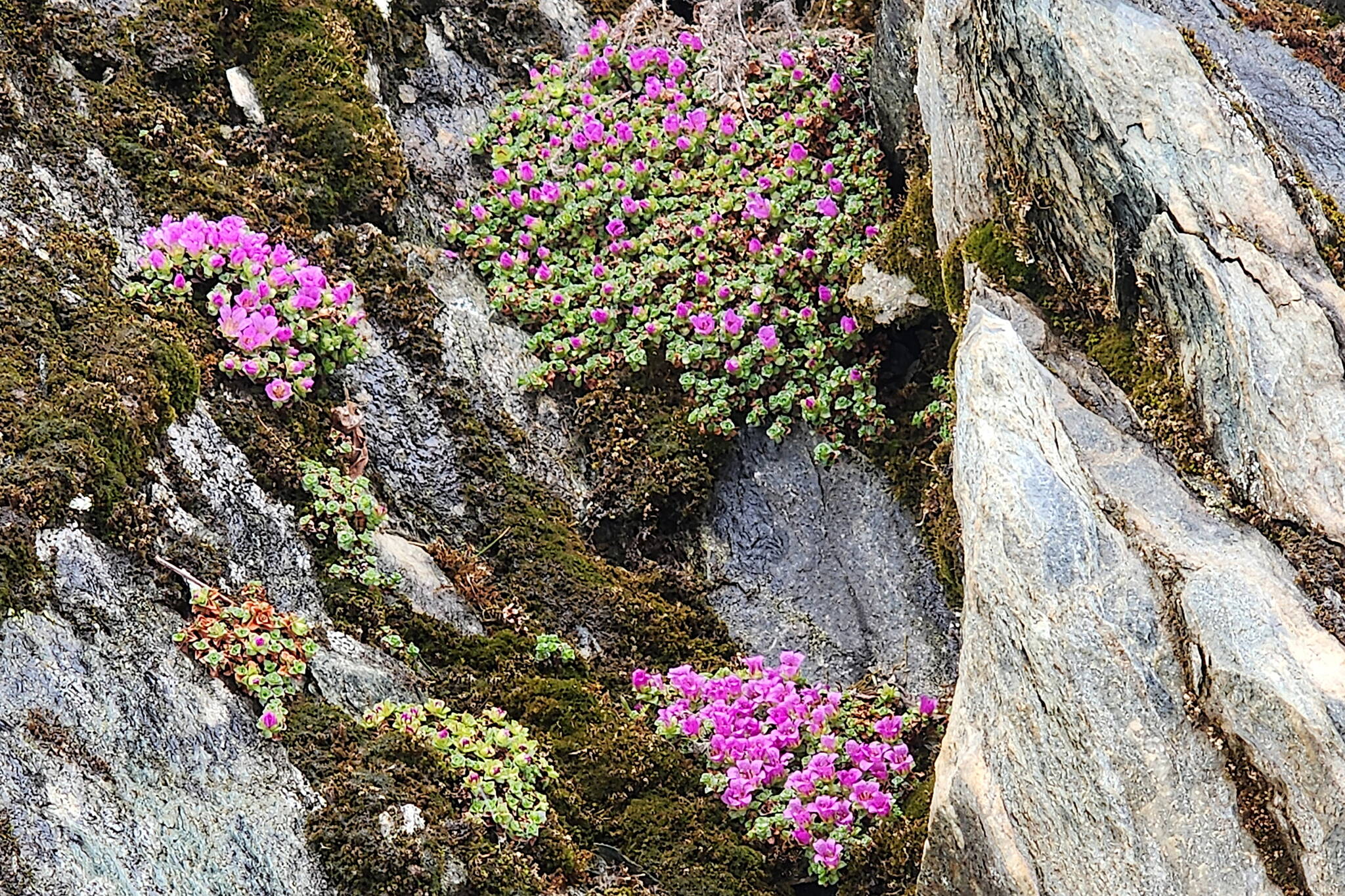Flowers influence their visitors in several ways. Visitors may be attracted by floral color, shape, or scents. Flowers offer rewards — nectar and pollen. But access to the rewards may be restricted by floral size, design, or orientation, such that only visitors of a certain size or capability can reach the reward. Or the nectar contains toxins that can be lethal to some consumers, but not to others. For instance, the flowers of bitter almond trees produce nectar containing a potent cyanogenic glycoside (amygdalin) that is toxic to mammals but honeybees and bumblebees are not harmed by it. Whole books can be written about the various tactics evolved by flowers to influence the identity and behavior of visitors and potential pollinators, and examples have often appeared in these essays. I recently learned about yet another way in which flowers manipulate their pollinators.
Plants commonly produce toxic chemicals as ways of deterring herbivory: caffeine and nicotine are two well-known examples. Caffeine is also known to occur in the nectar of several unrelated genera, including Camellia (tea), Coffea (coffee), Theobroma (cacao/chocolate), Ilex (holly), and Citrus, and nicotine occurs in nectar of Nicotiana (tobacco) and Tilia (lindens or basswoods). Although both caffeine and nicotine can have anti-herbivore functions in these plants, in nectar some of their effects can be quite different.
Several studies have shown that caffeine and nicotine at high concentrations in nectar can deter insect pollinators such as bees. But at low concentrations, the bees were not deterred and their behavior was changed. Low levels of nicotine improved the ability of bumblebees to learn the color of a flower and retain the memory of that color. Low doses of caffeine improved the ability of honeybees to remember the scent of a rewarding flower; foraging bees also recruited more foragers, potentially leading to the delivery of increased amounts of nectar to the colony. On the other hand, caffeine also tended to increase persistent visits to flowers that were no longer profitable (the bees remembered “too well!”), decreasing the likelihood of exploring an area for more kinds of flowers, and potentially reducing the amount of nectar delivered to the colony. The ultimate effect of these conflicting tendencies on the reproductive success of the plants requires further research.
Caffeine and nicotine can occur in pollen too, and bees often feed their larvae on both pollen and nectar, which leads me to ask what the possible effects on the developing larvae might be.
So….what about other toxins in plants, such as quinine, mescaline, or the complex mixture of marijuana? These play a role in defending plants from herbivores and pathogens. Do they also occur in nectar?
I had heard rumors that purple mountain saxifrage was blooming along Perseverance Trail, so I went up with a friend to look. It was snowing steadily and snow had accumulated at least two inches deep in places where the tree canopy was open to the sky. Ice crystals and snow clumps decorated the twigs of shrubs and willow catkins, and the big trees occasionally dropped small “snow bombs” onto our caps. We trudged upward, hoping that the rumor was true and that the snow had not covered the flowers. Finally, not far below the turnoff to Ebner Falls, we found them. Wedged into crevices in the cliffs, several sturdy clumps of the saxifrage were flowering vigorously, and a few more would come along later. Hurray! The weather may not act like spring, but these flowers decided to go ahead with things. Bees are already flying in warmer places such as the Arboretum, but I wonder if the bees will find these saxifrages and pollinate the flowers before they wither!
Changing the subject: On a gray and drippy day in early April, with a stiff cold breeze, I went to the little park at Fish Creek with a friend. I didn’t see the dipper I had hoped for, but something else was happening. In the big pond where fishermen congregate later in the season, some critter was swimming very fast, just under the water surface, making a long shallow wake as it circled the pond. Two resting mergansers were alarmed and departed precipitously. Reaching the far side of the pond, the wave-maker popped up its head and we got a look at each other. What it saw, I don’t know, but I saw a broad white, whiskery face with two dark eyes. An otter, surely. River otters occasionally appear to have pale faces, and sea otters often do, but the probability of a sea otter in this pond seems remote. The otter soon disappeared, leaving me to wonder what it might have been chasing and to marvel at the speed of the chase.
• Mary F. Willson is a retired professor of ecology. “On The Trails” appears every Wednesday in the Juneau Empire.

